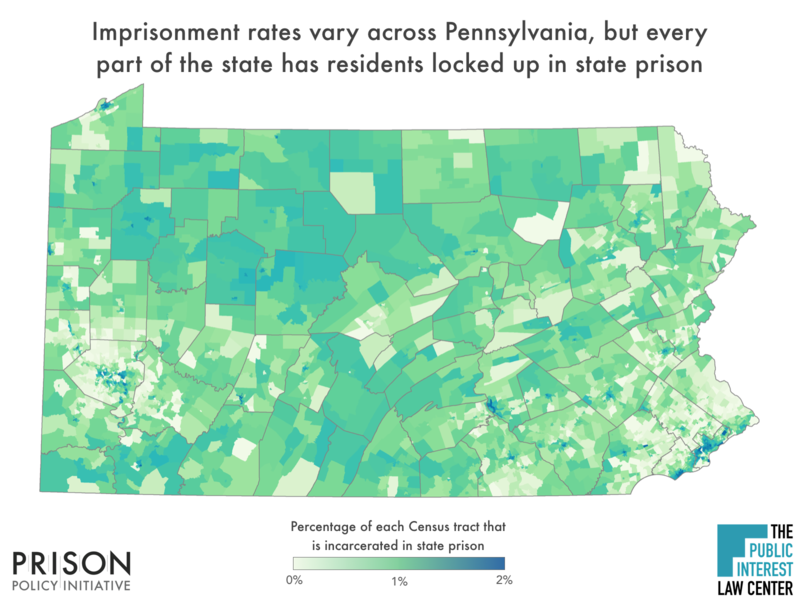New data reveal where people in Pennsylvania prisons come from
Report shows every community is harmed by mass incarceration
September 28, 2022
Today the Public Interest Law Center and the Prison Policy Initiative released a new report, Where people in prison come from: The geography of mass incarceration in Pennsylvania, that provides an in-depth look at where people incarcerated in Pennsylvania state prisons come from. The report also provides 10 detailed data tables — including neighborhood-specific data for Philadelphia, Pittsburgh, and Allentown — that serve as a foundation for advocates, organizers, policymakers, data journalists, academics, and others to analyze how incarceration relates to other factors of community well-being.
The data and report are made possible by the 2021 Legislative Reapportionment Commission’s decision to address the practice of prison gerrymandering. Pennsylvania was the first state to address this problem through its redistricting commission. With this change, the Commonwealth — for the first time ever — counted most incarcerated people at their homes instead of in prison cells when drawing new legislative district lines.
The report shows:
- Every single county — and every state legislative district — is missing a portion of its population to incarceration in state prison.
- While Philadelphia County sends the most people to prison, the much smaller Venango County has the highest imprisonment rate of any county, at 452 per 100,000 residents.
- There are dramatic differences in imprisonment rates within communities. For example, in Philadelphia, one of the most racially segregated cities in the nation, residents of the Nicetown neighborhood are more than fifty times as likely to be imprisoned than residents of the Center City-West neighborhood.
Data tables included in the report provide residence information for people in Pennsylvania state prisons at the time of the 2020 Census, offering the clearest look ever at which communities are most impacted by mass incarceration. They break down the number of people locked up by county, city, town, zip code, legislative district, census tract, and other areas.
The data show the cities with the highest state prison imprisonment rates are Chester (1,191 per 100,000 residents), Harrisburg (1,144 per 100,000 residents) and Uniontown (972 per 100,000 residents). For comparison, Bethel Park has the lowest imprisonment rate, at 21 people in state prison per 100,000 residents. Philadelphia and Pittsburgh have imprisonment rates of 463 per 100,000 residents and 276 per 100,000 residents, respectively.

“The nation’s 40-year failed experiment with mass incarceration harms each and every one of us. This analysis shows that while some communities are disproportionately impacted by this failed policy, nobody escapes the damage it causes,” said Emily Widra, Senior Research Analyst at the Prison Policy Initiative. “Our report is just the beginning. We’re making this data available so others can further examine how geographic incarceration trends correlate with other problems communities face.”
The report cites studies that show that incarceration rates correlate with a variety of negative outcomes, including higher rates of asthma, depression, lower standardized test scores, reduced life expectancy, and more. The data included in this report gives researchers the tools they need to better understand how these correlations play out in Pennsylvania.
“Mass incarceration hurts every community in Pennsylvania, but hurts some communities more than others,” said Benjamin Geffen of the Public Interest Law Center and co-author of the report. “As state and local leaders rethink our approaches to criminal justice, they should use data about who is in state prisons to target investments in jobs, housing, education, and healthcare that will strengthen families and communities.”
The report is part of a series of reports examining the geography of mass incarceration in America.
Pennsylvania is one of more than a dozen states and 200 local governments that have addressed the practice of “prison gerrymandering,” which gives disproportional political clout to state and local districts that contain prisons at the expense of all of the other areas of the state. In total, roughly half the country now lives in a place that has taken action to address prison gerrymandering.



